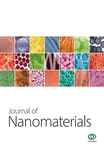Experimental Study and Stabilization Mechanisms of Silica Nanoparticles Based Brine Mud with High Temperature Resistance for Horizontal Shale Gas Wells
Abstract
Previous studies showed that silica nanoparticles based fresh water drilling muds had good thermal stability up to 160°C; however its performance at high salt concentration was rather poor. Therefore, high performance silica nanoparticles based brine mud (NPBMs) with high temperature resistance for horizontal shale gas wells was proposed. Thermal stability tests from ambient temperature to 180°C, along with pressure transmission tests and rheology analysis, were performed to evaluate comprehensive properties of the NPBMs. Results show that the NPBMs embody excellent salt tolerance and thermal resistance for their rheological parameters did not suffer significant fluctuation. Fluid loss of the NPBM-1 (4% NaCl plus 3% KCl) at 180°C was only 7.6 mL while the NPBM-2 (10% NaCl plus 3% KCl) had a fluid loss of 6.6 mL at 150°C. Low water activity and good lubricity of the NPBMs were beneficial to improve wellbore stability and reduce friction resistance. Pressure transmission tests on the NPBM-1 show that it can mitigate or even prevent the transmission of drilling mud pressure into shale thus improving wellbore stability. Additionally, optimal rheological models for the NPBM-1 and the NPBM-2 were Herschel-Bulkley model and Power Law model separately.




